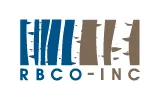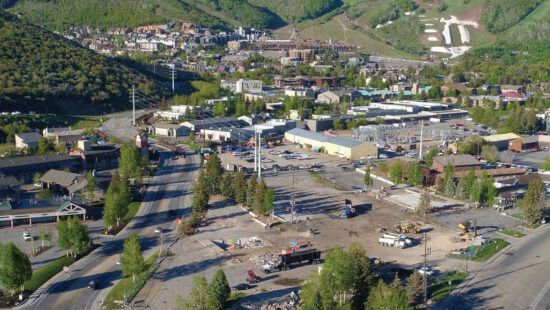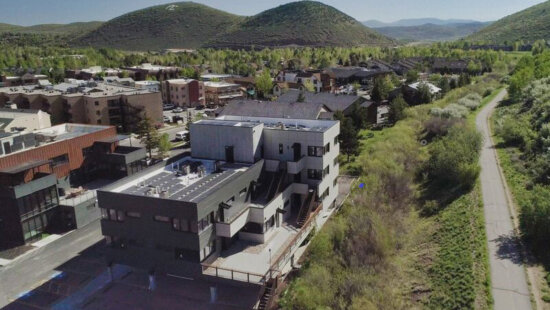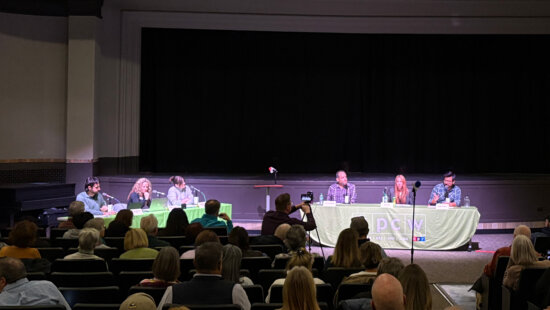Growth
Park City leaders urge caution on Bonanza Park upzone
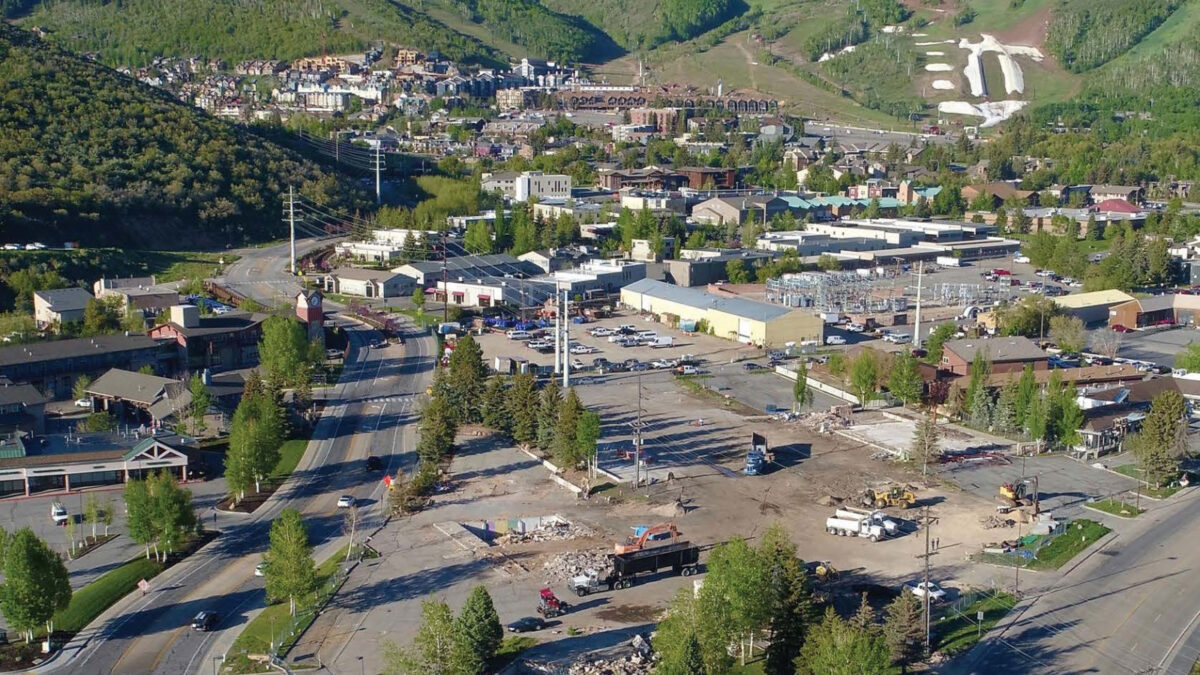
The Bonanza Park area. Photo: Park City Municipal
Ultimately, Rubell said, the key is to avoid giving away too much — but also not to set the bar so high that no one builds anything.
PARK CITY, Utah — A major zoning proposal that would reshape Park City’s Bonanza Park district is facing increased scrutiny from both current and former city leaders ahead of a public hearing his Thursday.
Former Planning Commission chairs Sarah Hall and Brad Olch, who warned in a recent editorial published by The Park Record that the proposed upzone would entitle more residential development than any project in city history, are now calling for a “course correction” before permanent rights are granted. City Councilmember Jeremy Rubell, speaking with TownLift, echoed concerns about the pace and content of the current proposal, saying it may not yet reflect the city’s strategic vision or the community’s priorities.
“The mistake cannot be undone”
In an interview, Hall said the most significant risk lies in granting permanent entitlements for high-density residential and boutique hotel development in one of the last remaining commercial cores of Park City.
“This transformation could erode small-town character with towering condo blocks, overwhelm infrastructure, and trigger a domino effect of high-density development that’s nearly impossible to reverse,” Hall said.
The plan, which would rezone a 70-acre area between Bonanza Drive and Park Avenue, allows up to 750 boutique hotel rooms and thousands of residential units “by right.” Hall warned that the proposal lacks guarantees for affordable housing and could undercut the city’s Affordable Master Planned Development (AMPD) incentive program.
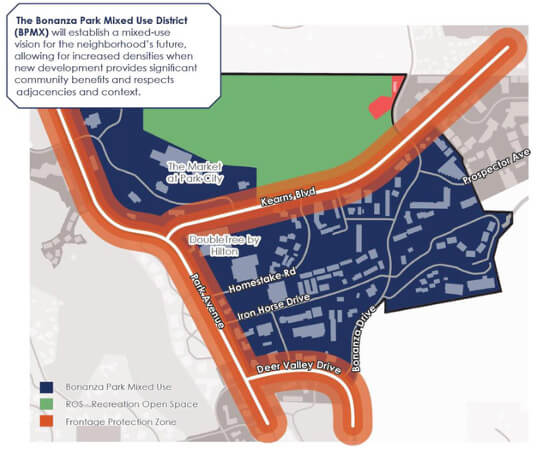
“Take, for example, the condo prices in Deer Valley East: high-density, yet still some of the most expensive real estate in town,” Hall said.
She added that when developers are offered density bonuses like a fourth story, reduced setbacks, or other flexibility in exchange for general community benefits rather than affordable housing, it significantly undermines the value proposition of the Affordable Master Planned Development (AMPD) tool – which she said is currently one of the only meaningful incentives to get deed-restricted affordable housing.
“If developers can get similar bonuses without affordability, they’ll take that path—and the community loses out. Once these rights are granted, they become the new baseline. The mistake cannot be undone, and it risks repeating the overdevelopment scenarios that Parkites have fought hard to avoid elsewhere,” Hall said.
Rubell: “This isn’t where I thought we were in the process”
Councilmember Jeremy Rubell expressed surprise that the current draft code is being presented for a vote. He said the Council had expected to review a range of options—rather than a final ordinance—after its last discussion in May.
“My impression was that we were providing feedback, not finalizing a code,” he said. “Now we’re being asked to approve something that includes changes Council never formally directed—like reducing open space.”
Rubell said he remains opposed to cutting the open space requirement from 30% to 22%, and questioned why the city would move forward with additional hotel units, reduced setbacks, or other concessions before understanding what is truly necessary to meet city goals.
“If the consultants are telling us we can meet our strategic outcomes with just slight parking reductions and a very minimal number of nightly rentals, then why give more than that?” he asked. “Let’s not start promoting high density or major giveaways before we know what’s actually needed.”
Rubell pushed back on the idea that the city’s proposed upzone is designed to “make it pencil” for developers. He said the focus should not be on profitability, but rather on creating effective zoning that actually delivers on the community’s strategic goals.
“This isn’t about doing favors for private developers,” Rubell said. “It’s about crafting code that results in the kind of development the community wants.”
At the same time, Rubell acknowledged that zoning must be realistic enough for developers to engage with it. If the city asks for too much, he said, the result could be stalled projects or no projects at all.
Ultimately, Rubell said, the key is to avoid giving away too much — but also not to set the bar so high that no one builds anything.
A call for meaningful public input
Hall and Olch stressed the need for stronger community involvement and saying there has been a disconnect in public engagement.
“This is not the Park City way. Now is the moment for residents to be heard. City councilors want and need to know how our community feels about the details of this upzone so that they can represent us,” the editorial said.
Hall also emphasized that meaningful engagement must go beyond public comment at meetings. “It requires multiple access points—attending meetings, emailing Council, and two-way dialogue. The public needs to see how their input influences decisions.”
Striking the right balance
While Hall, Olch, and Rubell all raised red flags about the upzone, they support another element of the proposal: updates to the Frontage Protection Zone (FPZ). That zone preserves scenic entry corridors along Park Avenue, Kearns Boulevard, and Deer Valley Drive by limiting building height and prioritizing green space and multi-use pathways.
“The FPZ as written seems reasonable,” Rubell said. “It preserves that open feel and reflects what the community has said it wants.”
As Park City grapples with growth pressures, Hall said increased density isn’t inherently bad—but must be applied strategically.
“It’s about intentional, incremental planning,” she said. “We need to fix our traffic and transit first. We need to build infrastructure before voluntarily adding more density.”
Hall urged the Council to revise the plan before entitlements are locked in: reduce the number of residential and hotel units, restore the 30% open space requirement, and ensure the AMPD program remains the clearest path to securing affordable housing.
Rubell said the Council has the ability—and the responsibility—to take a more measured approach. “We don’t have to adopt the zoning as presented,” he said. “We can send it back with clear direction. Let’s get it right before we lock it in.”
Public hearing set for Thursday
The Park City Council will hold a public hearing on the Bonanza Park upzone on Thursday, July 10. Residents can view the staff report at parkcity.org and send public comments to council_mail@parkcity.org.
“There’s still time to get this right,” Hall and Olch wrote. “But only if the community speaks up now.”











